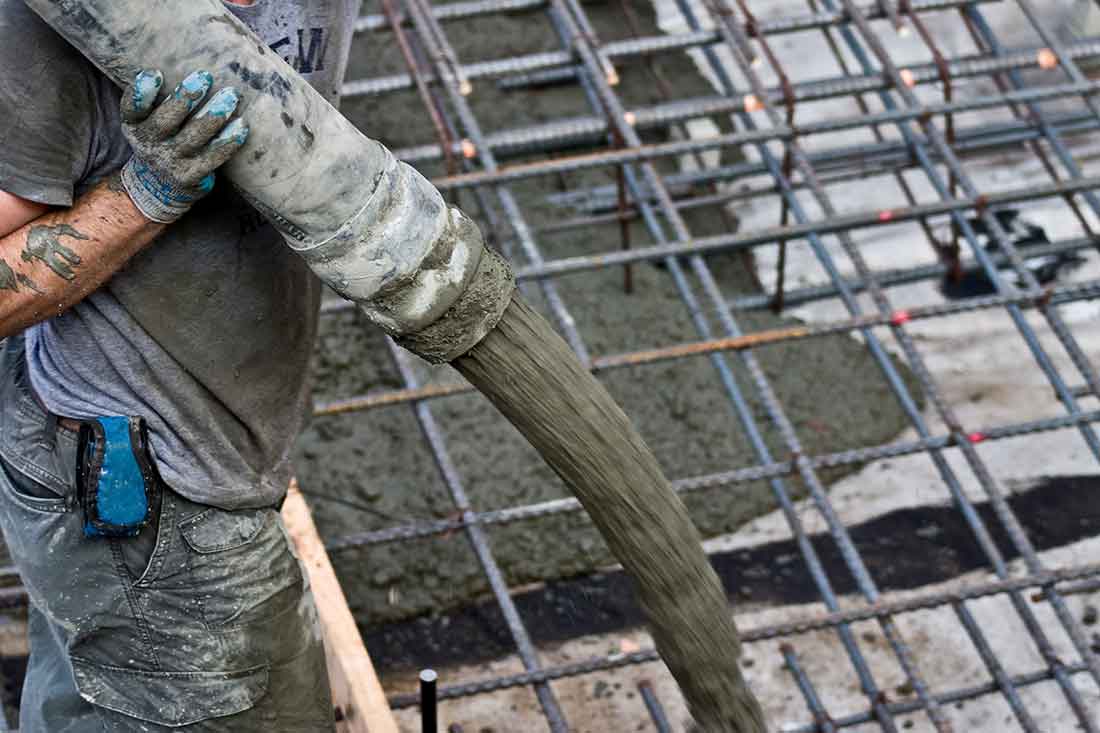Concrete Admixtures are used to improve the behaviour of concrete under various conditions and ensure the quality of concrete during mixing/transporting/placing/curing, both as a fresh concrete and hardened concrete. Concrete in different situations requires a different degree of workability. Sometimes, there are difficulties and limitations to obtain high workability in the field for a given set of conditions.
Concrete plasticizers can help in working in severe conditions for obtaining higher workability without using excess water. Superplasticizers are a type of concrete plasticizers, which can reduce water content up to 30% to obtain required workable concrete. Here we have given brief information on superplasticizers, which are used for improving the workability of concrete with less water content.

Courtesy – Minzchemicals
Superplasticizers which are also known as high range water reducers are synthetic water-soluble organic compounds that reduce the amount of water required to achieve certain stability of concrete, reduce water-cement ratio, reduce water content and increase slump. Superplasticizers are relatively a new category and improved version of concrete plasticizers. Regular plasticizers help in reducing 15% water content for concrete mixing. The use of superplasticizers reduces the quantity of mixing water required to produce a concrete mix of given consistency by 25 to 30%. Superplasticizers dosage is usually 0.5-3% of the weight of cement.
The superplasticizers are added in concrete in small amounts, but they affect many properties of concrete. Adding them increases the fluidity of the mix. At a given water-cement ratio and given water content, the dispersive action of superplasticizers highly improves the workability of concrete, such that concrete can be placed with little compactive effort, practically with no bleeding or segregation. They do not influence modulus of elasticity, shrinkage, creep or resistance to freezing and thawing. It has been observed that the setting time of concrete decreases with increase in dosage of superplasticizer.
Superplasticizers, when added to concrete can produce:
- At the same water-cement ratio much more workable concrete as compared to plain concrete in which superplasticizers are not added.
- For the same workability, it permits the use of lower water-cement ratio.
- With increased strength and with lower water-cement ratio, it also allows the reduction of cement content.
Types of Superplasticizers (Classification):
Few polymers which are commonly used as the base for superplasticizers are classified as below:
- Sulphonated melamine-formaldehyde condensates(SMF)
- Sulphonated naphthalene-formaldehyde condensates
- Modified lignosulphonates(MLS)
- Sulphonic-acid esters
In addition to the above, the following are some new generation high range water reducers which are recently used:
- Acrylic polymer based (AP)
- Copolymer of carboxylic acrylic acid with acrylic ester (CAE)
- Cross-linked acrylic polymer (CLAP)
- Polycarboxylate ester (PC)
- Multicarboxylatehers (MCE)
- Combination of above.
Advantages and disadvantages of superplasticizers are as follows:
Advantages of Superplastizers:
- They help in reducing water content by 25 to 30% for given workability of water. For site conditions where water is scarcely available, they can assist in improving the workability of concrete.
- Use of superplasticizers helps in avoiding segregation of concrete.
- Superplasticized concrete can be used in concreting heavily reinforced elements.
- By adding superplasticizers in concrete, the speed of concreting is increased.
- They act as retarders in hot-weather or where long placing periods are required for construction.
- As they make concrete more workable, less energy is needed to compact the concrete. Depending upon the requirements, self compacting concrete can be made by using superplasticizers.
- Superplasticized concrete provides finishing surface of better quality.
Disadvantages of Superplasticizers:
- They have high cost and hence the material cost of construction increases.
- If superplasticizer is added in excess quantity, then bleeding of concrete may occur. Thus for optimal performance, the amount or dosage of superplasticizer must be calculated carefully.
Superplasticizers are used for the production of flowing concrete, self-compacting concrete, or self-leveling concrete and for the production of high strength and high-performance concrete. A superplasticizer, when added to the concrete ingredients, will not have any adverse effects provided it is of good quality and is used in accordance with manufacturer’s instructions.
The popular manufacturers of superplasticizers in India are:
Also Read:
Do’s & Don’ts While Concreting
Sealant in Construction and Their Classification
What is Concrete Mix Design (CMD)?
Disadvantages of Bleeding in Concrete






